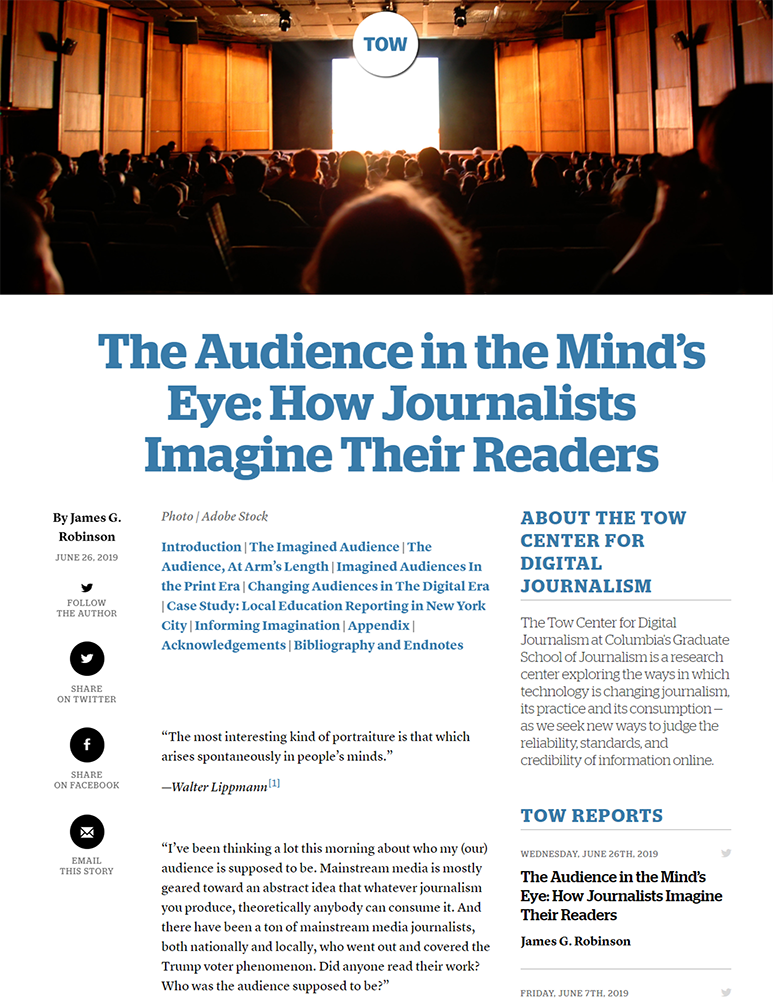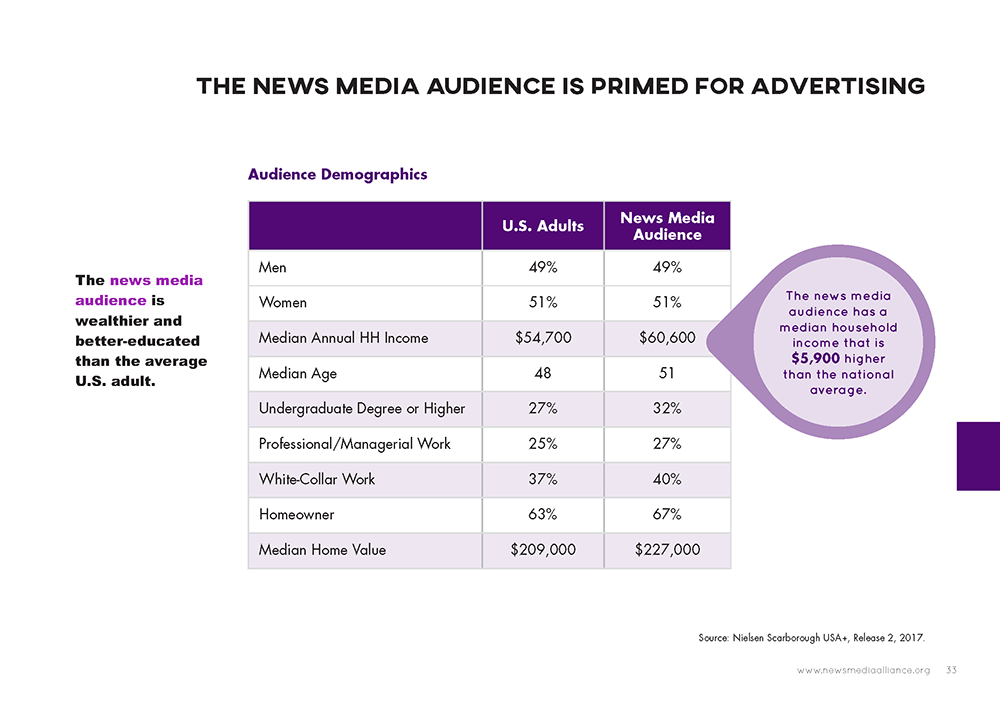
Developing a deeper understanding of who the news audience is, what they need, and what’s important to them can only help the news industry. Rich data about audience behavior, demographics and attitudes can inform stories that will bring readers in and keep them engaged, as well as help advertisers understand why news media are still a powerful channel to reach their customers. The Alliance has been gathering data about news audiences for years, most recently in our News Advertising Panorama.
In a recent study published in Columbia Journalism Review, James G. Robinson, adjunct professor and research fellow at Columbia University’s School of Journalism and Director, Global Analytics for The New York Times, investigated how journalists themselves imagine the audiences for their work; specifically, whether their mental image has changed with the rise of reader demographic and behavior tracking technology. As Robinson puts it, “This paper asks whether the new tools of the digital age have indeed influenced the ‘audience in the mind’s eye.’”
The goal of the study was to investigate “the extent to which beat journalists have taken advantage of this ability to better know their readers, and thus construct more accurate mental models of their audiences.” Some of the most interesting findings from the study – and recommendations for news organizations to consider – are detailed below.
Findings
 Robinson’s study acknowledges that reaching the largest possible audience should not always be the objective for reporters with their stories. Particularly with focused beats, as the study points out, “often, [the goal] is to reach the right people.” While it can be difficult to keep this goal in mind, many news organizations have seen success by prioritizing in-depth coverage of a niche topic. If readers trust a news organization to tell a story correctly, they will likely return for that coverage, and more.
Robinson’s study acknowledges that reaching the largest possible audience should not always be the objective for reporters with their stories. Particularly with focused beats, as the study points out, “often, [the goal] is to reach the right people.” While it can be difficult to keep this goal in mind, many news organizations have seen success by prioritizing in-depth coverage of a niche topic. If readers trust a news organization to tell a story correctly, they will likely return for that coverage, and more.
Robinson looked at how journalists have traditionally perceived their audiences, then detailed a case study of interviews of reporters on the education beat in New York City to compare how the process of creating mental images of an audience has changed based on new technology. What he found was surprising: “Little seems to have changed since the print era.”
Why has so little has changed about this piece of a journalist’s job, when so much else has transformed in the same time? One insight the study puts forward is that “analytics tools focus almost exclusively on user behavior, rather than intent; revealing little about the emotional underpinnings of engagement that inform the imagined response.” This is vital for news organizations to keep in mind: understanding what your analytics tools can and cannot measure is key in ensuring they are used appropriately. No analytics tool can paint a full picture of a reader’s wants and needs – other research techniques, such as reader surveys and focus groups, can enrich any dataset. On the Alliance webinar, “Getting the Best Data for Your Organization,” Head of Audience Development Solutions at Parse.ly, Kelsey Arendt, and Director, Consumer Revenue Optimization at Tribune Publishing Company, Brian Howell, shared examples of how newsrooms can effectively use data. Brian shared how Tribune uses data particularly when pricing subscription renewals, and how they have been able to use a subscriber’s data to pinpoint the right renewal price.
The study’s conclusions feature some key questions and one broad recommendation for newsrooms:
1. We are starting to see a change in the landscape: as business models shift from advertising to subscriptions, newsroom analytics are starting to move beyond raw pageview counts to more advanced user segmentation. Why not build out user segments for particular lines of reporting as well?
2. Reporters sometimes feel that audience thinking is not their job, deferring to the expertise of editors and audience specialists. But as we have seen, reporters (especially those on a beat) have significant autonomy over many journalistic decisions — from choosing what to cover to actually crafting the story. Why not empower (or even expect) them to bring actual audience knowledge to bear on these choices, rather than imagined assumptions based on the conventions of the past?
3. The major recommendation of the report focuses on improving the diversity of reporters and newsrooms. Both in the past and today, many reporters imagine their audiences to largely comprise people similar to themselves. As Robinson explains, “If perceived audiences are largely based on one’s peers, colleagues, and social circle, encouraging newsroom diversity is critical in order to broaden that circle of trusted voices to include people outside the industry’s most common demographic groups.”
Changing how reporters perceive their audiences is only one part of the process. Ensuring that multiple voices are heard, and multiple audiences are served by news requires expanding who creates news.

